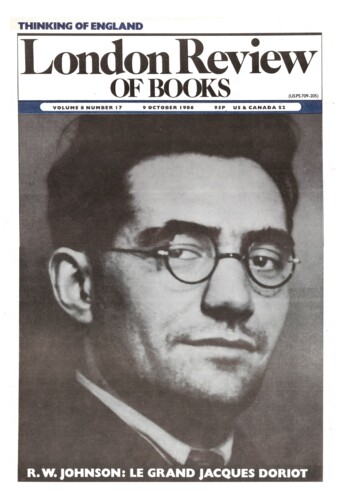Papers
Paul Driver, 9 October 1986
From the general reader’s point of view, this tome – a scrupulous, detailed inventory of Beethoven’s pocket and desk sketchbooks, locating every extant leaf – is about as reviewable as the Stanley Gibbons stamp catalogue, which it resembles in bulk and necessary emphasis on watermarks, paper-types and other arcana. For the specialist musicologist, and the non-specialist, even the general musician, it must count as a signal achievement of scholarship, to be applauded, reverenced and used. Now, for the first time since the sketchbooks, lovingly protected by Beethoven, passed into the hands of early collectors (Dominic Artaria, Ludwig Landsberg, Friedrich Grasnick, Paul Mendelssohn-Bartholdy, Anton Schindler), before being scattered to the European winds, serious students are in possession of the bibliographical information they need. Our authors supply the fullest description of each book, going deep into matters of binding, pagination and structural integrity; itemising contents; carefully attempting datings; and tracing relevant history. The chapters, taking a sketchbook at a time, also include an often beguiling structural chart: thus, in the case of the book known as ‘Artaria 197’, we can learn at a glance about its gatherings, quadrants, paper-types, rastrologies (numbers of staves per page) and stich-holes. From diagrams in the chapters on reconstruction techniques, we can learn how sheets were folded, and even how to make sketchbooks of our own: shades here of Blue Peter. One such chapter introduces pleasant distinctions between ‘sketchbooks with a regular structure and professional stiching’, ‘sketchbooks with a regular structure and non-professional stiching’, and ‘sketchbooks with both irregular structure and non-professional stiching’. It is all a bibliographer’s paradise.’



